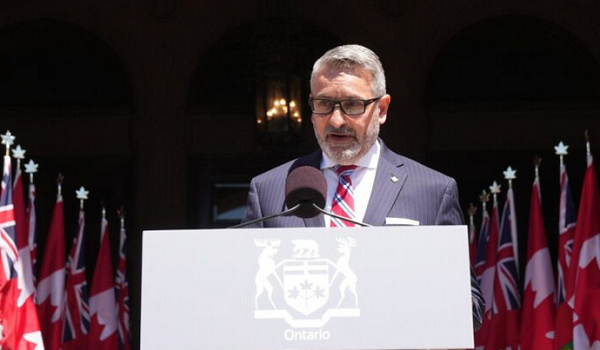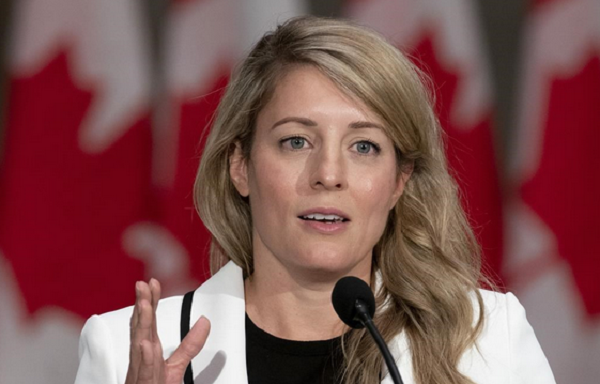Ontario allocated millions to four cities for exceeding housing target after count tallied care beds
Four cities that are receiving extra money from the Ontario government for exceeding their housing targets only met the allocations because of the province’s decision to include long-term care beds in calculations.
Provincial data show the four municipalities – Peterborough, Brantford, Sudbury and North Bay – would have fallen short of their 2023 targets had the government relied on the criteria it listed when it launched its reward program last summer.
However, after the government said in the fall that it would add “new and upgraded” long-term care beds to its tallies, the four cities surpassed their provincially assigned housing targets, making them eligible for bonus funding.
Long-term care beds accounted for 9 per cent of the overall provincial total of 109,011 new homes last year, allowing Premier Doug Ford’s government to say it reached 99 per cent of its 110,000 target.
The government’s decision to count long-term care beds as housing units is tantamount to “cooking the books,” said Frank Clayton, co-founder and senior research fellow at the Centre for Urban Research and Land Development at Toronto Metropolitan University.
Mr. Clayton said the move runs counter to established definitions used by Statistics Canada and other experts. Long-term care homes are considered collective dwellings, not private dwellings, because they do not have self-contained units with kitchens, he said.
“It’s not proper,” he said. “They’re just not the same animal at all. That’s kind of misleading.”
Municipal Affairs and Housing Minister Paul Calandra told municipalities the province would add long-term care beds to its calculations in October, said spokeswoman Bianca Meta.
“We believe these should be counted toward our shared housing goals as these are permanent homes on which many Ontarians rely,” she said in a recent e-mail.
In addition, the government is now considering further changes to its calculations. The province is exploring data sources to track “other institutional types of housing such as student residences and retirement homes,” according to a letter Mr. Calandra sent Mississauga’s acting mayor last month.
Mr. Ford and his cabinet ministers have made a series of announcements, handing out giant novelty cheques in recent weeks to mayors of cities that have met or exceeded their housing targets under the government’s Building Faster Fund. The province says the money is for “housing-enabling infrastructure and other related costs that support community growth.”
The province tracks municipalities’ performance using data on housing starts and conversions from the Canada Mortgage and Housing Corporation. Housing starts are defined as the beginning of construction, including pouring a foundation. Conversions include turning single-family homes into multiunit residences and office buildings into apartments. The government also uses provincial long-term care bed data.
The Ontario government has awarded a total of $6.8-million to Peterborough, Brantford, Sudbury and North Bay, the cities that would not have met their housing targets without counting new and upgraded long-term care beds.
Many of the long-term care beds the province included in its calculations are not net new beds, but rather ones in nursing homes under construction to replace aging facilities.
For instance, Peterborough is receiving $1.88-million from the province for exceeding its 345-unit housing target with 506 new housing units. Provincial data show that half the city’s total number of new units – 256 – are long-term care beds. The city also had 173 housing starts and 77 conversions.
The 256 long-term care beds will be in a new Extendicare facility being built to replace an existing 174-bed nursing home, said Peterborough Mayor Jeff Leal, who welcomed the government’s decision to include long-term care beds in its counts.
“When you have individuals, couples that are moving into long-term care facilities, that is freeing up what I would classify as either conventional apartments or single-family homes, which creates a bigger inventory of homes and apartments,” he said.
Brantford is receiving almost $3.07-million in bonus funding from the government, the highest of the four municipalities. The city had 788 new housing units last year, according to the province, exceeding its 733-unit target. However, it would not have done so without counting 200 long-term care beds.
Mayor Kevin Davis said that while municipalities aren’t a “catalyst” in approving new long-term care homes, which fall under provincial jurisdiction, they are involved in the zoning and permitting process. He said it makes sense to include beds in calculations and give cities bonus funding because nursing homes also require municipal infrastructure services.
Greater Sudbury is receiving a $1.52-million bonus for exceeding its 279-unit target with 436 new homes. The city had 258 housing starts, 160 long-term care beds and 18 conversions, according to the data.
“I know there’s a bit of a debate” about counting long-term care beds, said Mayor Paul Lefebvre. “At the same time, my opinion is very much that these are homes for these folks.”
The Ontario government has also announced that North Bay will receive $400,000 for surpassing its housing target. The city relied heavily on long-term care beds to do so – with 160 out of 202 total new units, the data show.
Most of those long-term beds will replace existing beds in North Bay. A 160-bed Sienna Senior Living long-term care home currently under construction is the redevelopment of a 148-bed facility.
Mayor Peter Chirico said North Bay’s actual housing performance was even higher last year, but conversions weren’t recorded because of an error that also affected several other cities. He said he is working with officials to have the data counted in 2024 figures.
The Ontario government’s latest figures show that 26 out of the 50 cities with provincially assigned targets had either met their 2023 allocations or come within 80 per cent of their goals as of Feb. 22. That was up from one month earlier, when three-quarters had not met their targets.
Some cities have complained about the government’s metrics and argue the province should instead judge them by the number of building permits they issue.
This article was first reported by The Globe and Mail












